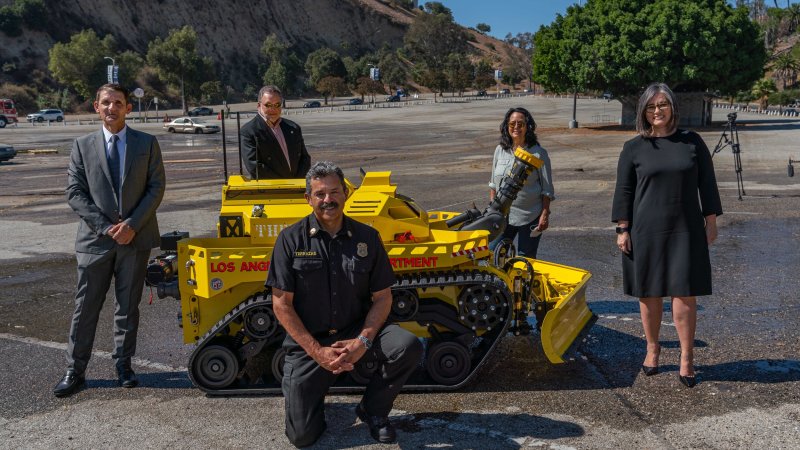Los Angeles firefighters recently received an RS3, but it’s not the Audi-badged type that offers a sonorous five-cylinder engine and Quattro four-wheel drive. It’s a remote-controlled robotic vehicle that looks like a miniature tank. It was developed to venture into dangerous situations, and it is the first of its kind in the United States.
Designed by Howe and Howe Technologies, the Thermite RS3 is heralded as the world’s first robot purpose-built for fighting fires. It rides on industrial-grade rubber tracks, has a stand-off range of 547 meters and the low center of gravity provides excellent stability as it dispenses up to 2500 liters of water per minute. It’s also equipped with an 8,000-pound winch, so even a fully loaded Chevrolet Suburban won’t get in the way for long.

The power of the Thermite RS3 comes from a water-cooled 1.6-liter industrial three-cylinder diesel engine built by Yanmar. It develops 36.8 horsepower, offers 20 hours of run time, and has a top speed of around 8 mph. While you’d expect it to be powered by an advanced type of autonomous technology, it isn’t going anywhere without the input of a human operator. The robot is remote-controlled and integrated high-definition cameras give the controller a clear view of its surroundings for maneuvering around obstacles.
Los Angeles will send the RS3 to large commercial fires, wood structures under construction, fuel tank fires and car storage fires, among others. The robot will also be used to rescue large animals. Because its top speed is so low, it has to be towed to the fire with a specially designed trailer and a sturdy pick-up.
Robots are expensive, and the Thermite RS3 is no exception. It reportedly costs $ 278,000, so it’s more expensive than the Porsche 911 Speedster introduced in 2019. Los Angeles explained that it was able to buy the robot thanks to a generous donation, so don’t expect it to become a common sight in the United States.
Related video: